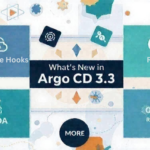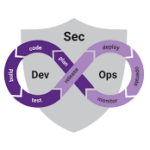
In today’s hyper-competitive digital economy, speed is everything. Businesses are expected to release new features, products, and updates rapidly—without compromising on quality or security. Traditional software development practices, which often involve handoffs between isolated teams, manual processes, and long deployment cycles, simply can’t keep up. This has given rise to the adoption of DevOps and automation as strategic enablers of speed, agility, and innovation. Together, they help organizations break down silos, reduce errors, and deliver value to customers faster than ever before.
Understanding DevOps: More Than Just a Methodology
DevOps is not just a toolset—it’s a mindset. At its core, DevOps is about fostering collaboration between development, operations, and other stakeholders to create a continuous feedback loop across the entire software development lifecycle. By breaking down traditional barriers between teams, DevOps promotes a culture of shared ownership, accountability, and quick iteration. The result? Faster time to market, improved software quality, and a more responsive approach to customer needs. DevOps encourages practices like continuous integration (CI), continuous delivery (CD), and infrastructure as code (IaC)—all of which are supercharged when paired with automation.
Why Automation is Essential in DevOps
Automation is the engine that powers DevOps. It removes manual, error-prone tasks from the development and deployment process, allowing teams to move faster and with greater confidence. Think of tasks like code integration, testing, infrastructure provisioning, and deployment—all these can be automated to ensure speed and consistency. Automation enables repeatability, scalability, and reliability, all of which are essential in modern software delivery. With automation in place, developers can focus more on building features and less on managing environments or fixing broken builds.
Core Areas Where Automation Transforms Delivery
One of the most impactful uses of automation in DevOps is through CI/CD pipelines. These pipelines automatically integrate code changes, run tests, and deploy updates to production, often within minutes. This allows teams to release updates quickly and frequently while maintaining high quality.
Another critical area is Infrastructure as Code (IaC), where infrastructure is defined and managed through code instead of manual configuration. This ensures consistent environments across development, testing, and production. Tools like Terraform, Ansible, and Pulumi make it easy to automate the provisioning and scaling of cloud resources.
Automated testing is equally important. From unit tests to integration and security scans, automated testing helps catch issues early, long before code reaches production. This minimizes downtime and helps maintain a stable, secure application.
Additionally, monitoring and alerting automation provides real-time visibility into system health and performance. When something goes wrong, automated responses can trigger alerts, rollbacks, or even self-healing mechanisms, reducing the time needed to resolve incidents.
The Business Impact: Speed, Quality, and Innovation
The combination of DevOps and automation delivers far-reaching business benefits. First, it drastically reduces time-to-market, enabling companies to respond to customer needs and competitive pressures more quickly. It also improves product quality, as automated tests and monitoring reduce bugs and downtime. With fewer manual processes, teams experience higher efficiency, lower operational costs, and better resource utilization. Perhaps most importantly, it creates a culture of continuous improvement and experimentation, where teams are empowered to innovate, test new ideas, and deliver incremental value at a rapid pace.
Challenges in Adoption and How to Overcome Them
Despite its clear advantages, implementing DevOps and automation comes with challenges. Legacy systems, rigid organizational structures, and resistance to change can all slow down adoption. Teams may struggle with tool sprawl, lack of standardization, or insufficient skills. To overcome these hurdles, it’s best to start small, perhaps by automating a single CI/CD pipeline or infrastructure process, and then gradually scale the practice across teams.
Organizations should also invest in training and culture change. DevOps thrives in environments where teams are encouraged to experiment, fail fast, and learn continuously. Leadership support, cross-functional collaboration, and the right tooling ecosystem are critical to long-term success.
The Future is Automated and Collaborative
As digital transformation continues to reshape industries, DevOps and automation are no longer optional—they are foundational. Together, they provide the agility, resilience, and speed needed to succeed in a fast-moving world. By streamlining development and operational workflows, businesses can achieve faster innovation, better quality, and greater customer satisfaction. The organizations that embrace this change will be better positioned to lead the next wave of digital evolution, where speed, security, and scalability are key to sustainable growth.
Follow us for more Updates












